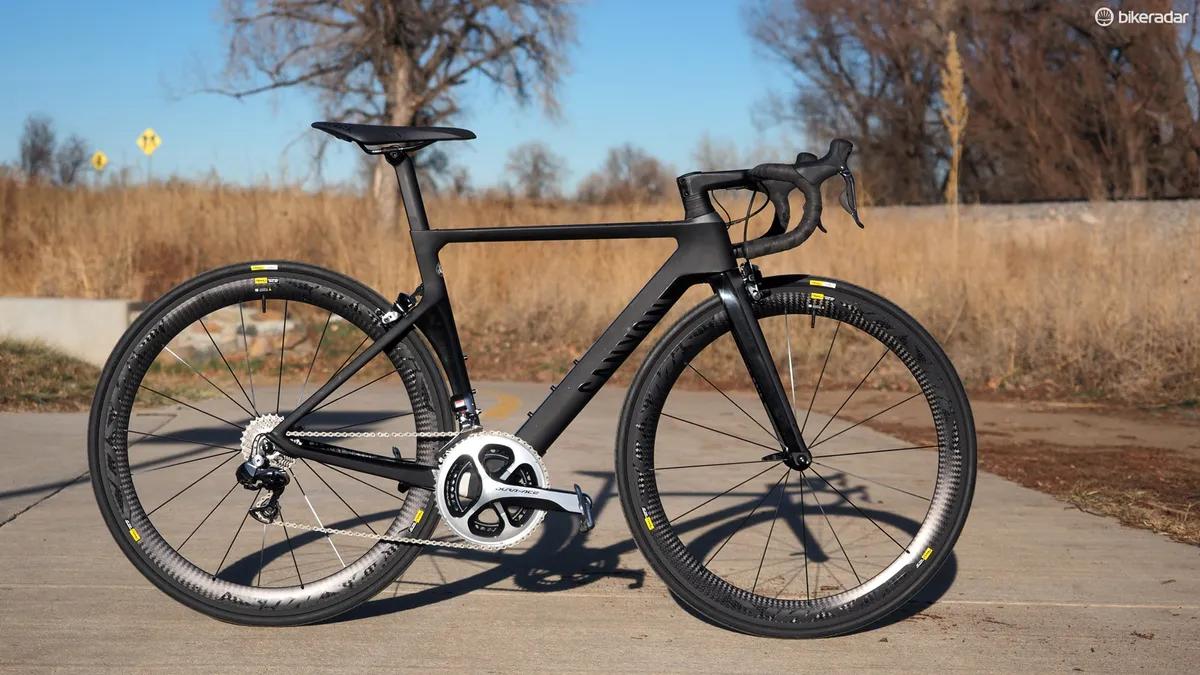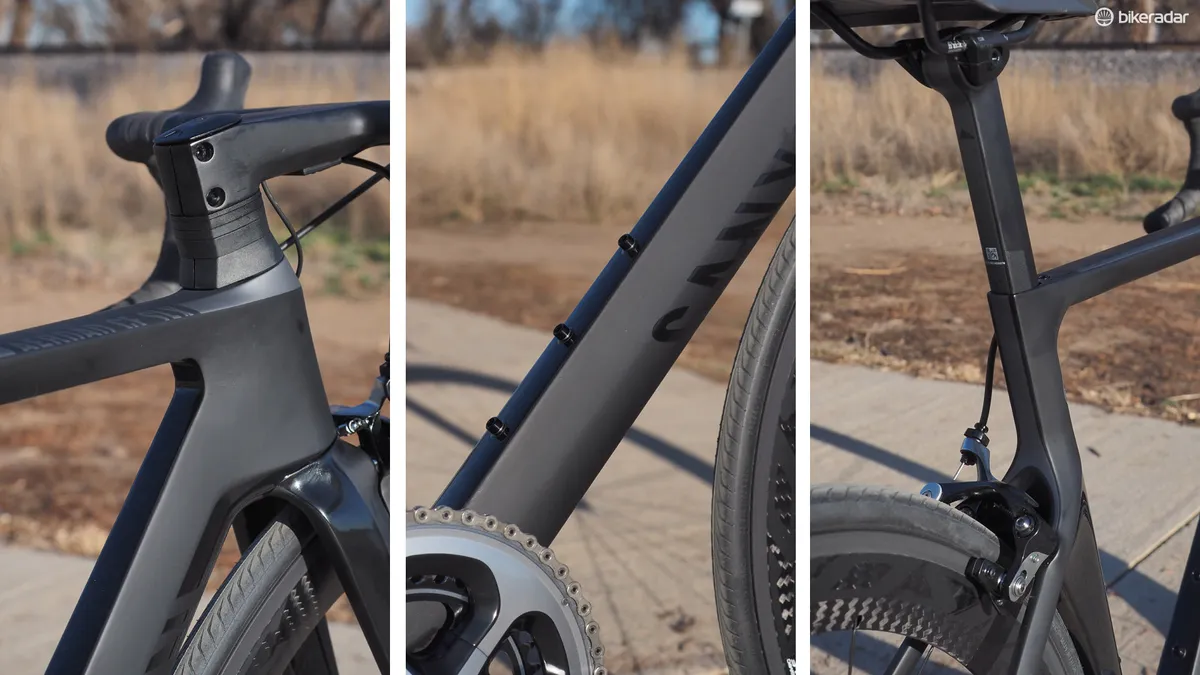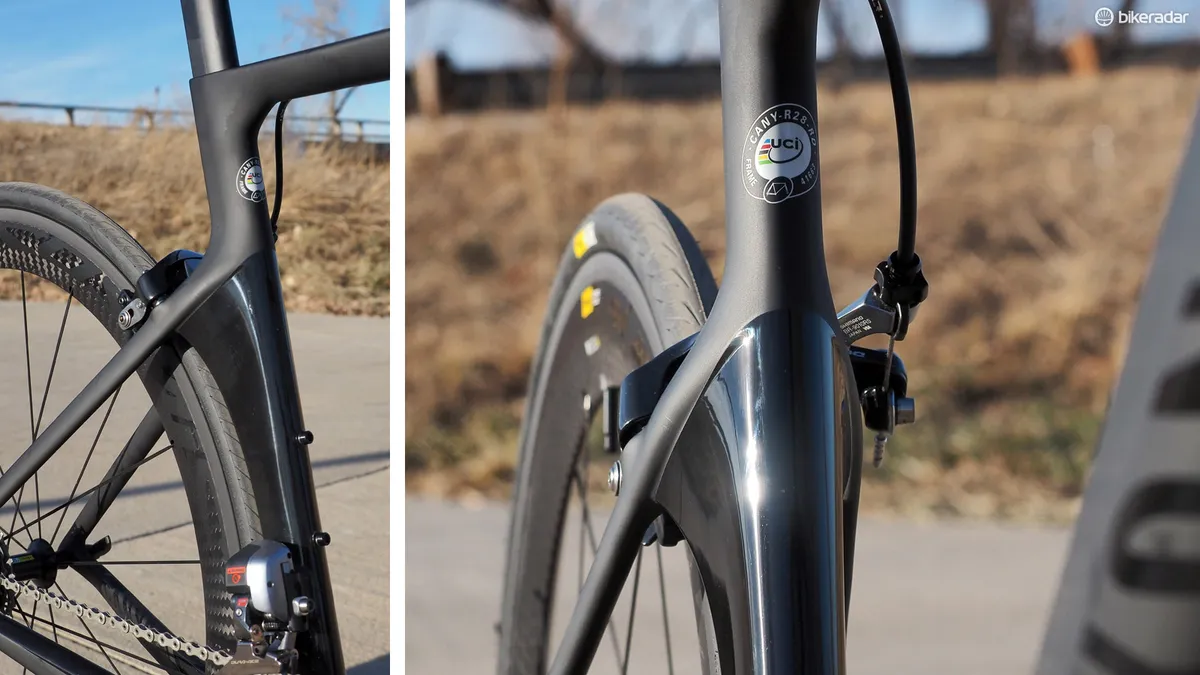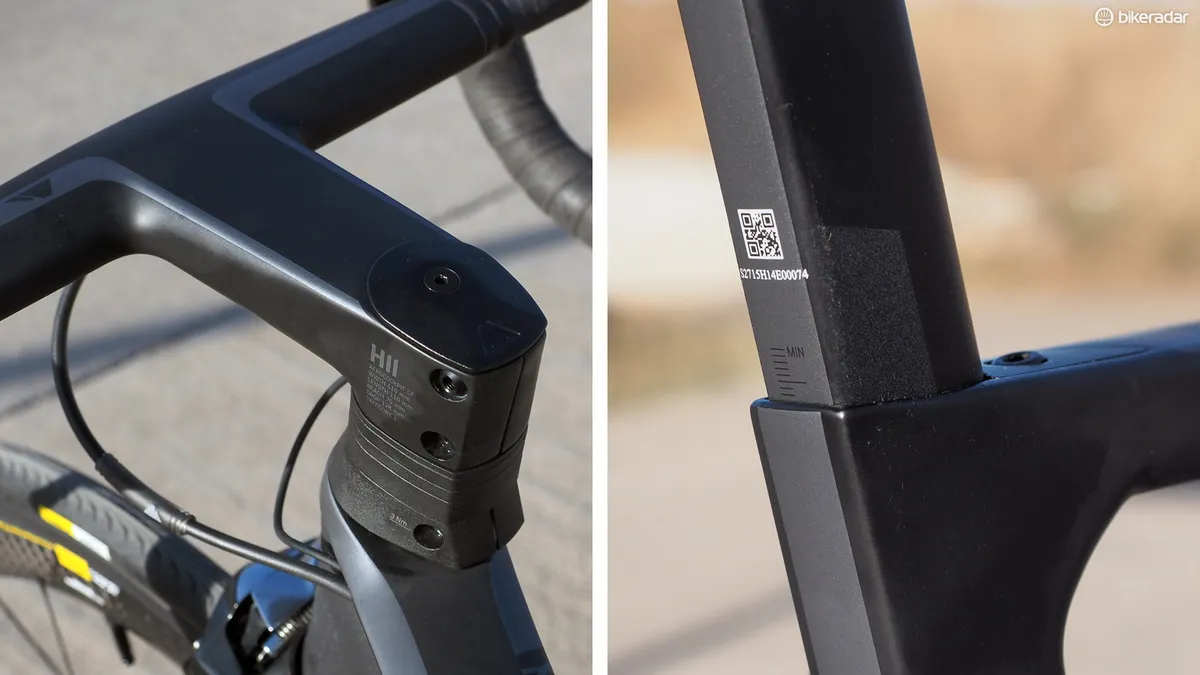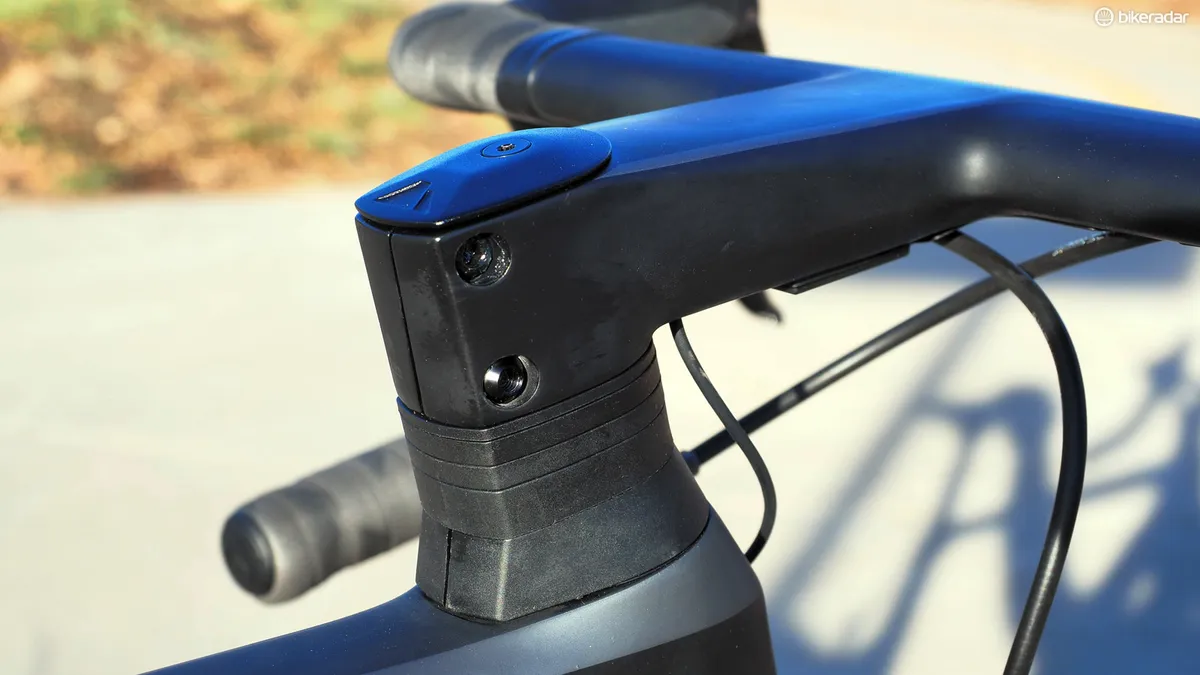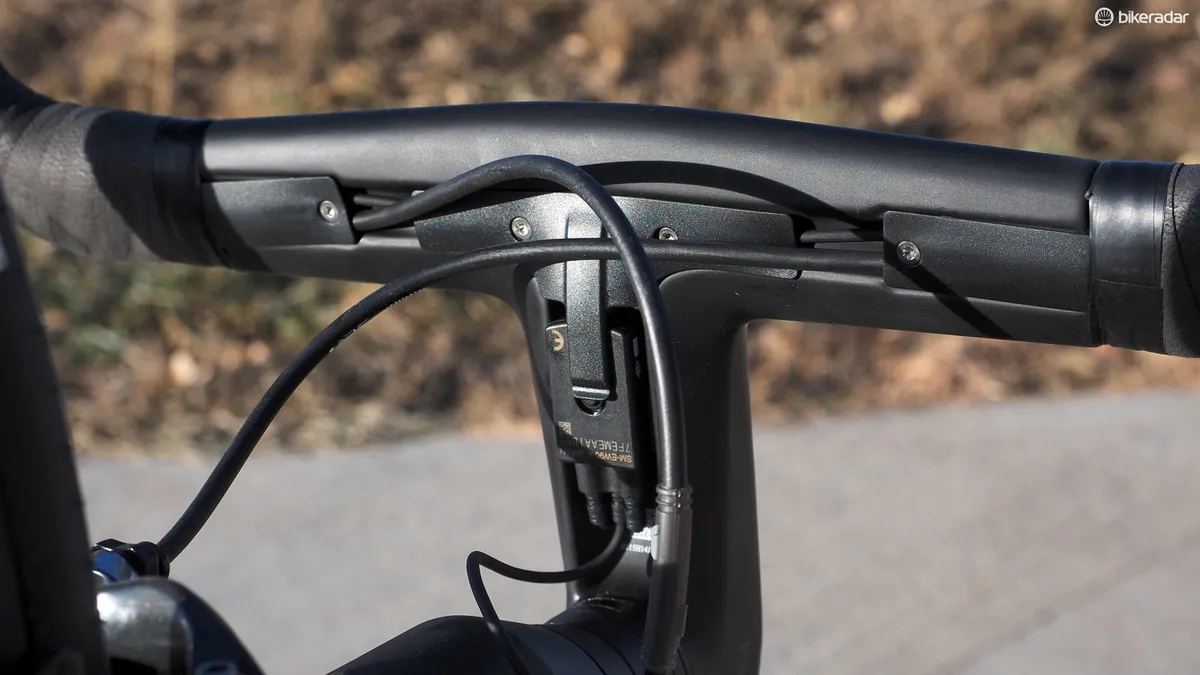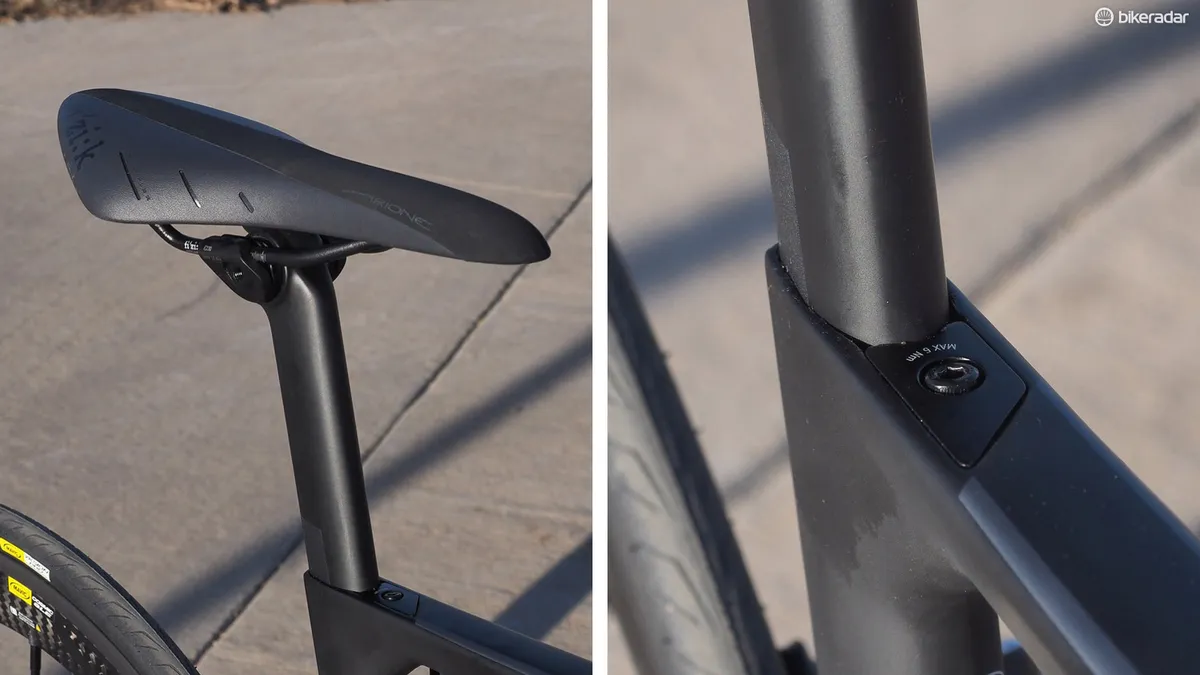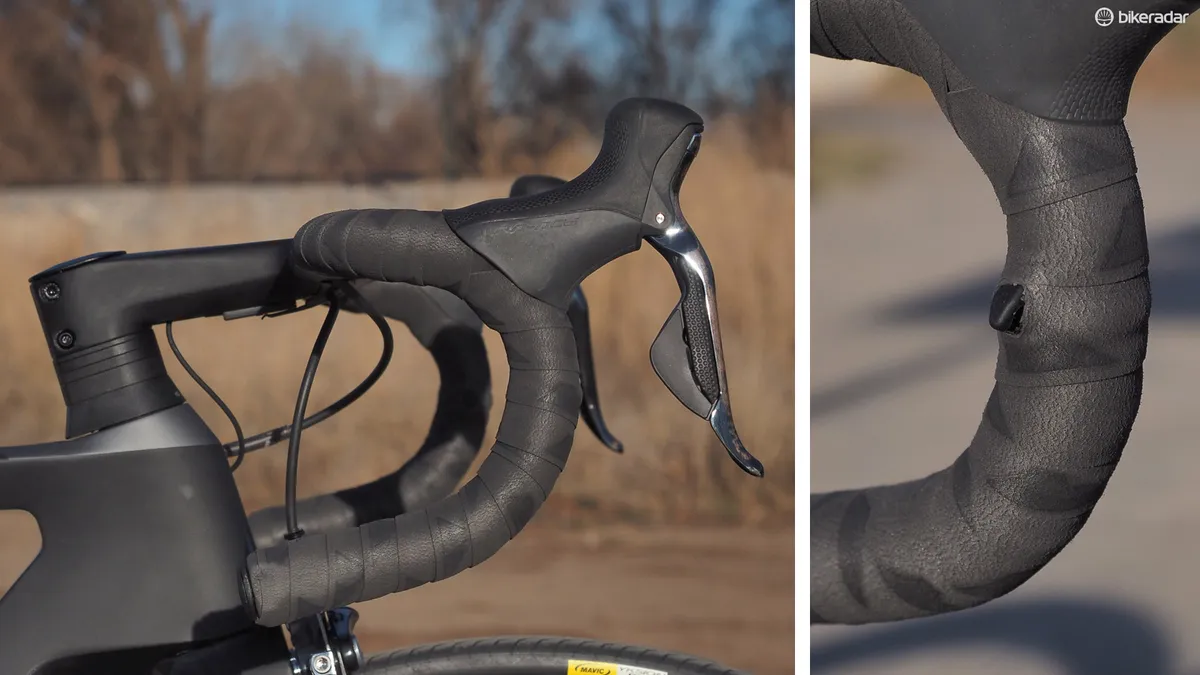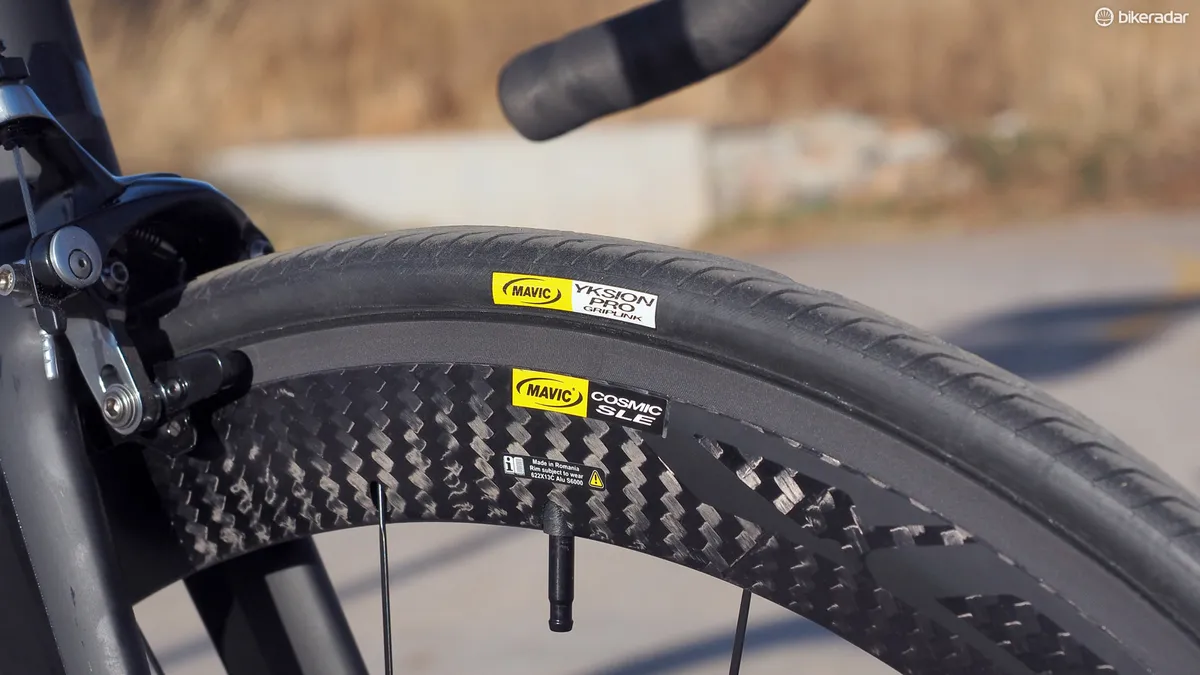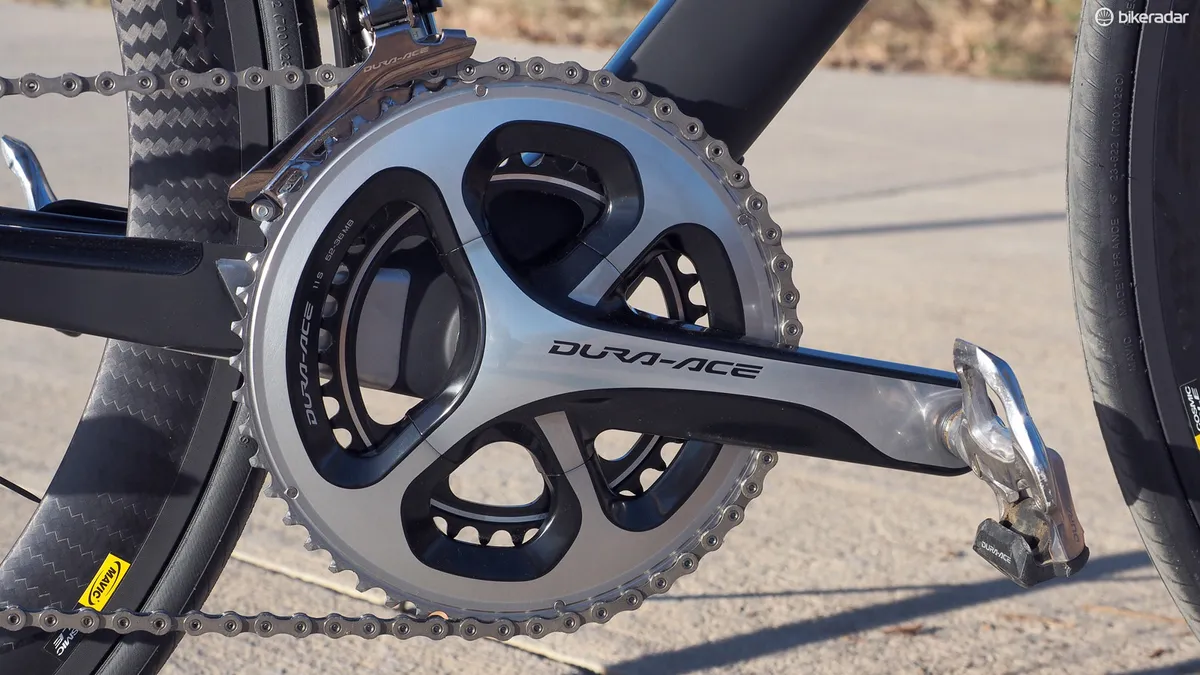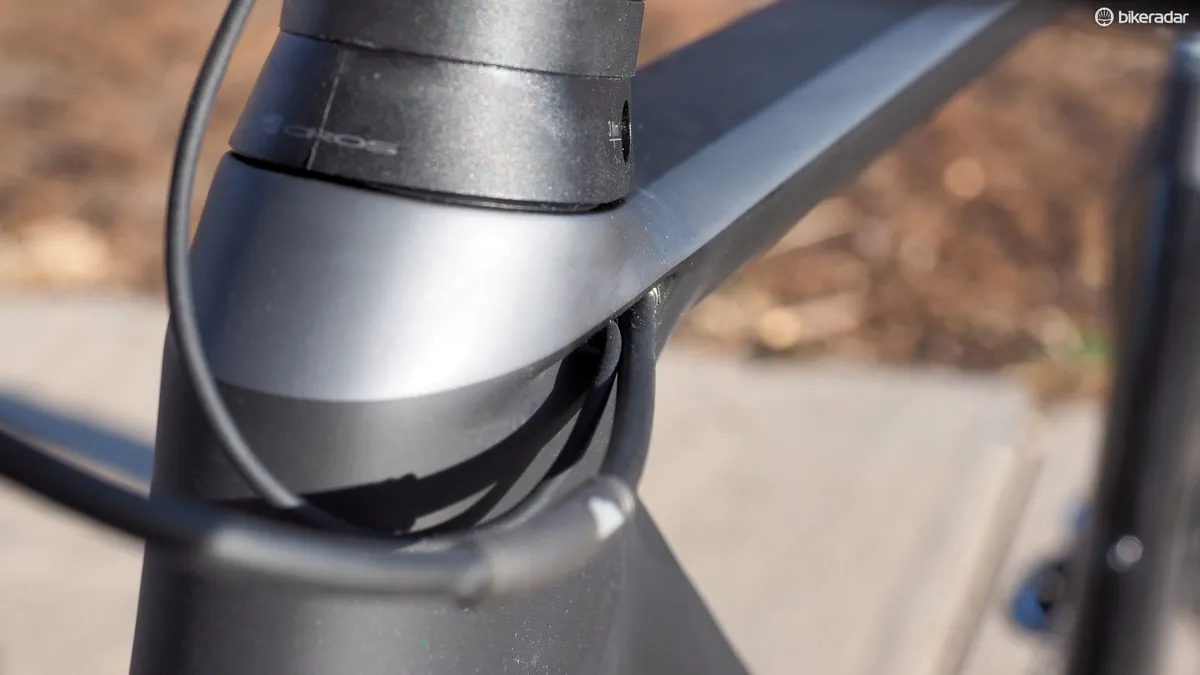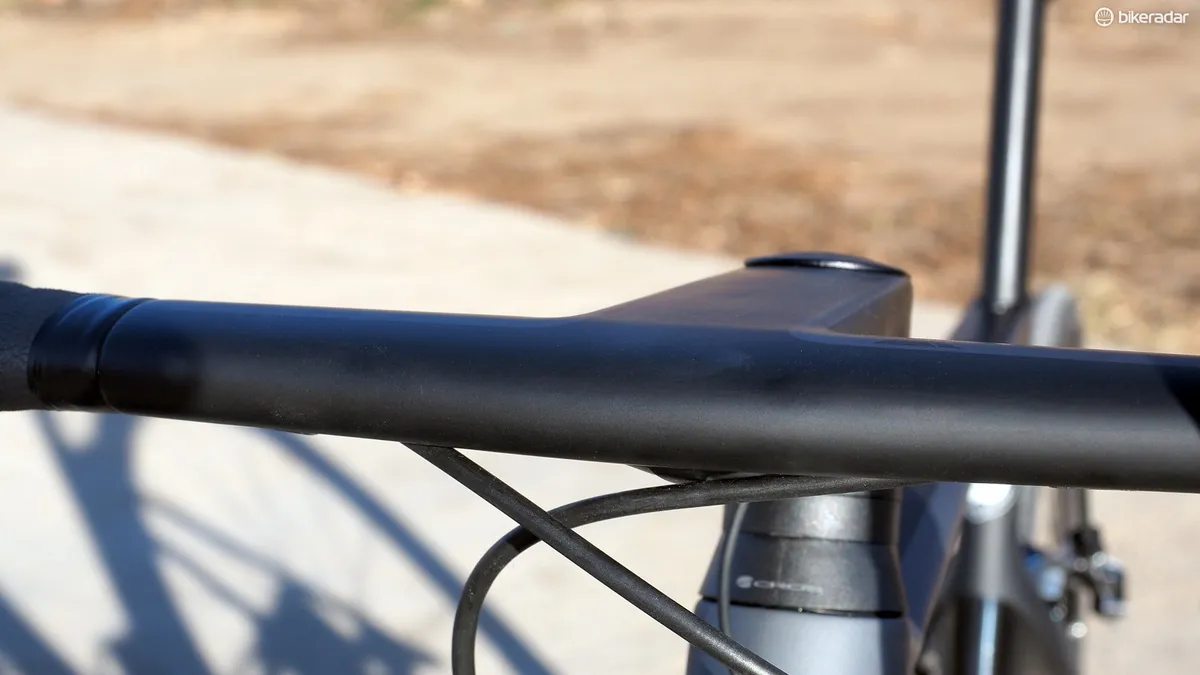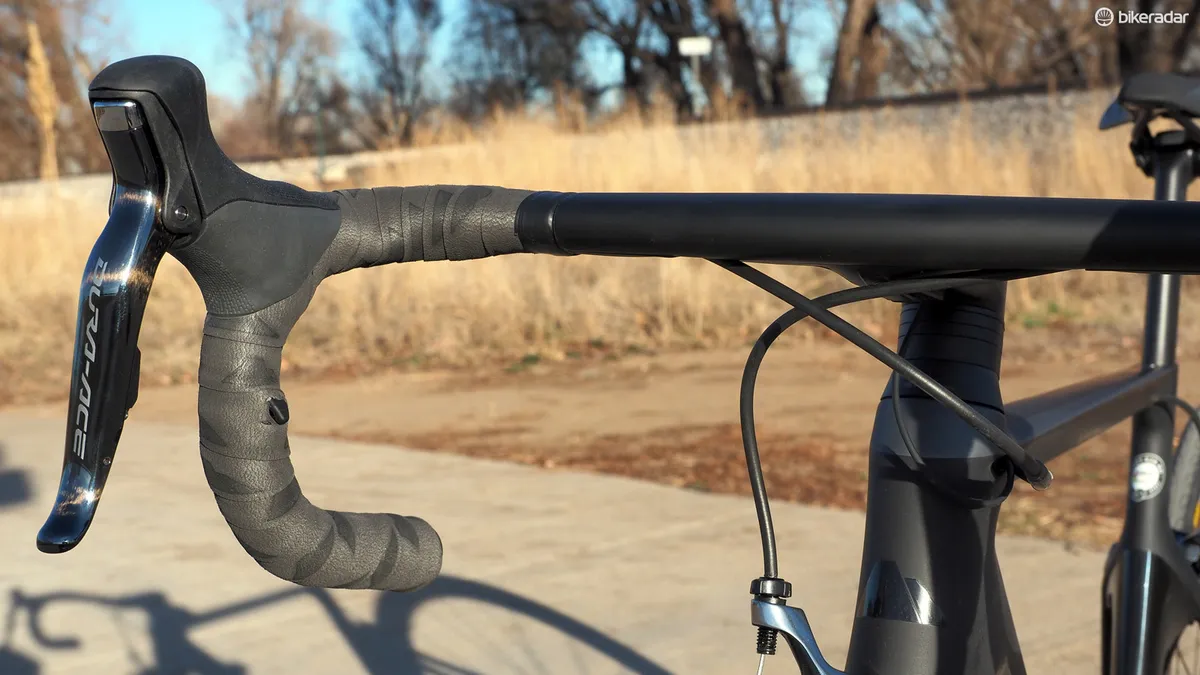If the first-generation Canyon Aeroad CF aero road bike felt somewhat half-baked, this fresh Aeroad CF SLX chassis comes across like a perfectly golden-brown pastry made with some of the best ingredients possible. It's blazingly fast, it rides surprisingly well, and it's stunningly striking to look at, all while sacrificing virtually nothing in the name of speed. Add highly competitive pricing and you've got a failsafe recipe for success.
- Highs: Noticeably fast, remarkably decent ride, fantastic aesthetics, excellent pricing
- Lows: Old-school wheels, howling brakes, non-convertible internal routing, can't easily get one in the United States or Australia
- Buy if: You want an aero road bike without compromises
Ride and handling: speedy and solid, yet reasonably comfy
Aero road bikes are all about speed, and the new Aeroad CF SLX 9.0 SL delivers in spades. We unfortunately don't have any independent wind tunnel data to supplement our usual on-road testing but we can still say that the bike is measurably faster at typical race speeds than Canyon's own Ultimate CF SLX – even with the same aero wheelset fitted.
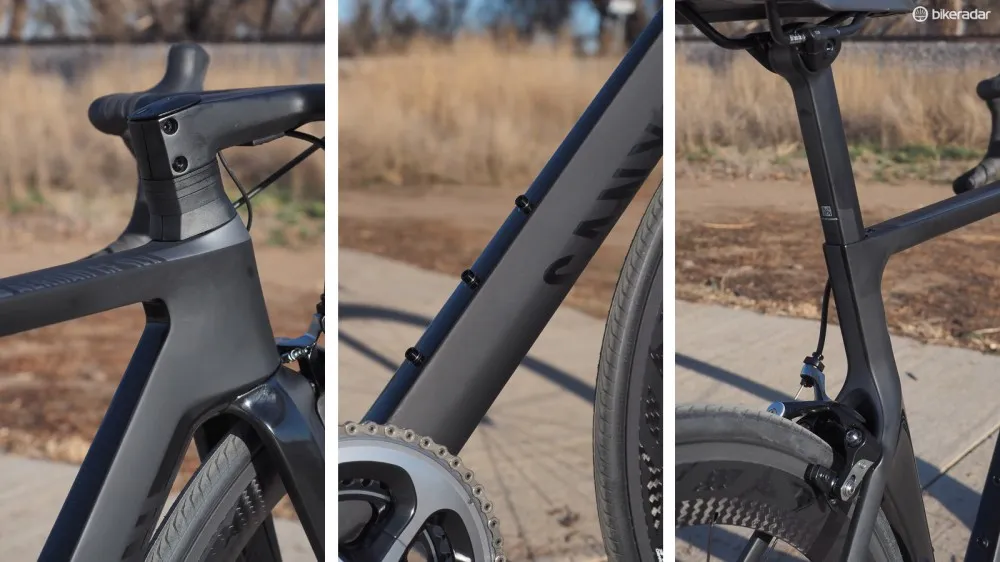
Despite the relatively deep tube sections, the Aeroad CF SLX 9.0 SL actually rides quite nicely
On one of our typical 50km (31mi) test loops, we regularly shaved about a minute off of our times in comparison to a non-aero frameset. More noticeable, however, was how much easier it was to reach – and maintain – higher speeds when needed.
That Canyon was able to craft a frame that performs so well aerodynamically is impressive on its own, but the way this second-generation bike finally casts off the previous version's mediocre stiffness and ride quality is even more worthy of praise. A bike that goes faster on paper will undoubtedly appeal to racers concerned with saving time (or effort), but one that does so while still feeling efficient and comfortable broadens its appeal considerably.
This new version has greater solidity down at the bottom bracket, but the biggest difference is at the front end. Its predecessor was noticeably lacking in torsional rigidity, particularly when muscling the handlebars in a sprint or climb. This new model with its substantially broader main tubes is more akin to a traditional light-and-stiff chassis with little tangible out-of-plane movement. Whether such movement actually detracts from performance is debatable but mentally, it definitely feels more efficient – and the reduced front-end twist unquestionably yields more precise and confident handling when pushing hard.
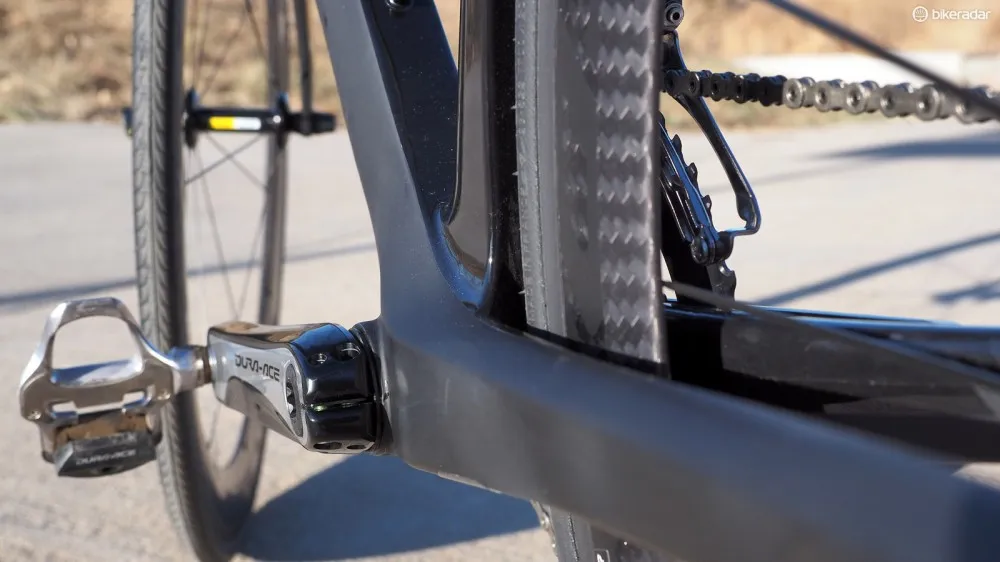
Though supposedly much more aerodynamic than before, the new Aeroad CF SLX chassis is also noticeably more rigid
Canyon has nailed the Aeroad's frame geometry, too. Compared with the Ultimate CF SLX, the Aeroad appropriately features a longer reach and shorter stack that naturally fosters a more aggressive position. Handling characteristics are still well suited for all-day stints in the saddle, though, with stable manners at warp speed and quick reflexes when the corners start coming at you fast and heavy. Should you find the stock handling a little too tame, you can even personalize the Aeroad's handling manners by flipping around the clever 'chips' in the fork tips to adjust the rake. The change is just a few millimeters but it makes a big difference on the road.
Best of all is that Canyon bundles all of this into a chassis that's still quite comfortable. Despite narrow 23mm-wide tires (and similarly narrow 13mm-wide rims), the Aeroad CF SLX 9.0 SL manages to take the edge off of rough chip-sealed pavement and washboarded dirt roads alike. Bigger impacts still resonate through the deep-profile frame tubes but even then, it's reasonable. Overall, this is easily a bike that we can ride for short periods or all day – and quickly either way.
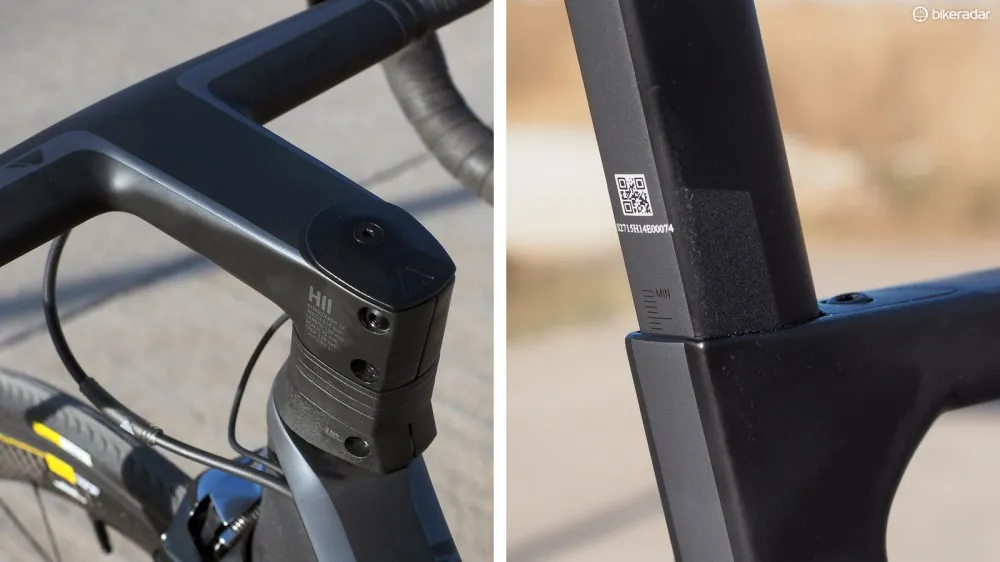
Aero road bikes aren't supposed to be comfortable, are they?
Frame: a stealth fighter on two wheels
This latest Aeroad CF SLX differs dramatically from Canyon's original aero road effort. That first-generation Aeroad focused on minimizing frontal area with narrow, airfoil-profile cross-sections. This time around, Canyon uses the more currently popular Kamm-type tube shapes on the head tube, down tube, seat tube, and seatpost. Despite the visually dramatic clipped trailing edges, Canyon claims that this not only retains most of a full airfoil's aerodynamic performance when the wind is coming at you head-on but actually betters those drag numbers at higher yaw angles.
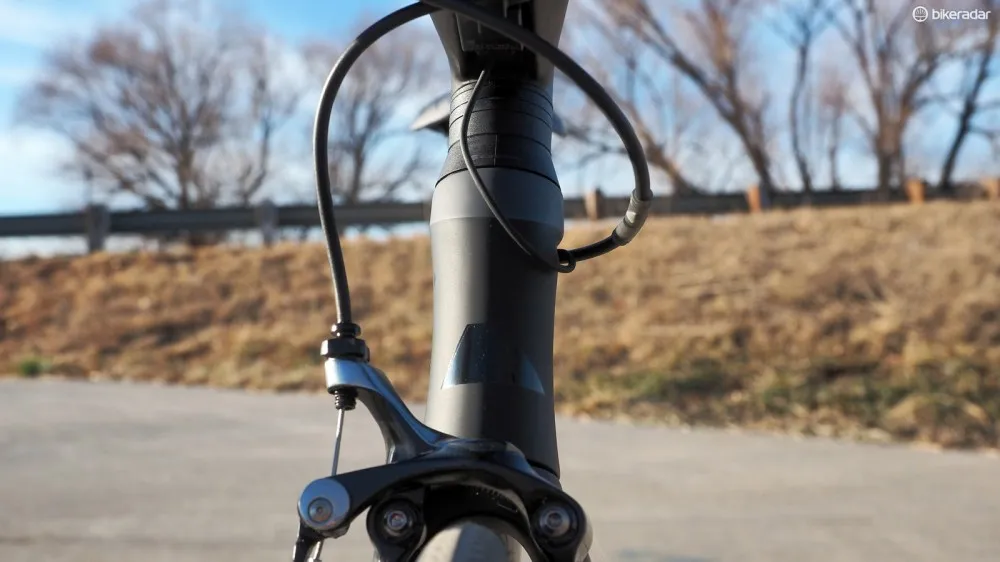
The steerer tube is bigger than before but custom headset bearings from Acros maintain a trim outer profile
The less sail-like proportions are also easier to manage in strong crosswinds and as an added bonus, the tubes can be made much broader while still complying with UCI technical guidelines for greatly improved chassis rigidity. Furthering the chassis stiffness is the oversized straight 1 1/4in steerer tube (but with custom Acros headset bearings for a trim outer profile) and the PF86 bottom bracket shell, which provides more width for the adjoining down tube and chainstays.
Speaking of which, it's worth noting that the shell tolerances on our sample were very good and the bearing cups fit tightly and evenly. Over four months of frequent testing – sometimes in wet conditions – we thankfully heard no creaking.
Clever details abound on the Aeroad CF SLX chassis. For one, the seatpost binder is neatly incorporated into the top tube for a sleek profile but without obscuring tool access or the inconvenience of an integrated mast. Unlike some other wedge-type binders, this one hasn't slipped once, either. Three water bottle mounting holes are built into the down tube, too – set the cage further up if you're running two, or lower down if one is sufficient for lower drag.

The seatpost binder is neatly hidden and works well
Nor has Canyon compromised braking performance in the quest for aerodynamic dominance. Both of the direct-mount Shimano Dura-Ace calipers are bolted in at the usual locations, which is not only easier to service but – according to Canyon – actually produces less drag than a chainstay-mounted setup. Further helping matters on the drag front is the partial fairing at the seatstay/seat tube joint, which effectively hides the rear caliper from the wind.
Even the internal cable routing is admirably tidy with the Shimano Di2 wire using the same frame entry port as the rear brake housing. Meanwhile, the battery and wiring junction box are easily accessible through a small hatch near the bottom bracket. Up front, wires are internally routed through the purpose-built Canyon Aerocockpit integrated carbon fiber bar and stem, whose keen shape mirrors the Kamm-tail profile of the rest of the bike, too.
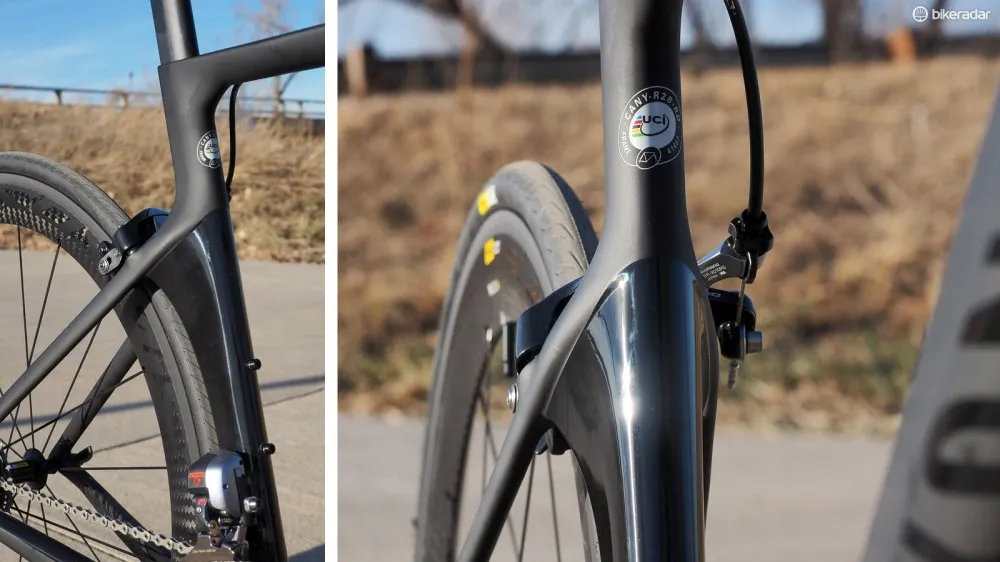
Canyon says that the conventional brake position is not only more convenient but also faster, too
You'd better make sure you're forever married to an electronic drivetrain, though, as while the routing execution is undoubtedly slick, it unfortunately isn't convertible. Prospective buyers should also pay close attention to the frame geometry as each size tends to fit like a bigger bike than the stated numerical label.
Claimed weight for a 56cm frame is 960g. Our 50cm sample posted an actual weight of just 897g plus 345g for the matching fork.
Equipment: brilliant Di2 group and slick Aerocockpit front end but wheels need updating
Canyon's direct-to-consumer business makes for a lusciously enticing build kit considering the comparatively modest retail cost. All Aeroad CF SLX frames are identical, and we went with the third-tier 9.0 SL model that included a complete Shimano Dura-Ace Di2 groupset, Mavic Cosmic Carbone SLE aero clinchers, Canyon's own Aerocockpit integrated bar and stem, and a Fizik Arione saddle.
Total weight without pedals is a scant 6.83kg (15.06lb).
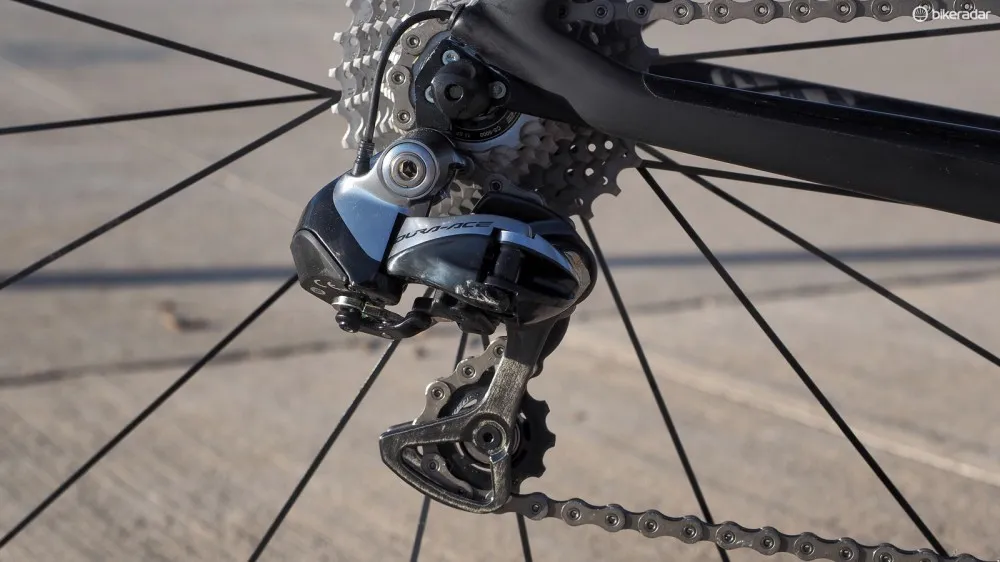
The Shimano Dura-Ace Di2 9070 drivetrain is technically flawless
We've praised at length the awesome performance of the Dura-Ace Di2 transmission before and that reputation is only further reinforced here. Our test bike unfortunately required a small derailleur adjustment upon arrival but after a quick one-minute fix (literally), shift performance remained dead-on perfect for the next four months. No further tweaking was needed afterward and there was absolutely no degradation in shifting smoothness or speed despite more muddy dirt-road rides than we care to admit.
Canyon has also included the supplemental 'sprint' shift buttons for easy shifting while in the drops – a wise move considering Aeroad buyers presumably will be spending plenty of time there.
As we mentioned earlier, Canyon sticks with conventional brake caliper locations on the Aeroad CF SLX and it's a decision worthy of applause. The Shimano Dura-Ace direct-mount brakes are not only easy to work on but serve up possibly the best power and control we've experienced on any mainstream cable actuated rim brake. Thanks in part to the stiffer direct mount standard where each caliper arm bolts independently to stout low-profile frame stub, lever feel is impressively firm and positive on both sides, even when applying lots of pressure.
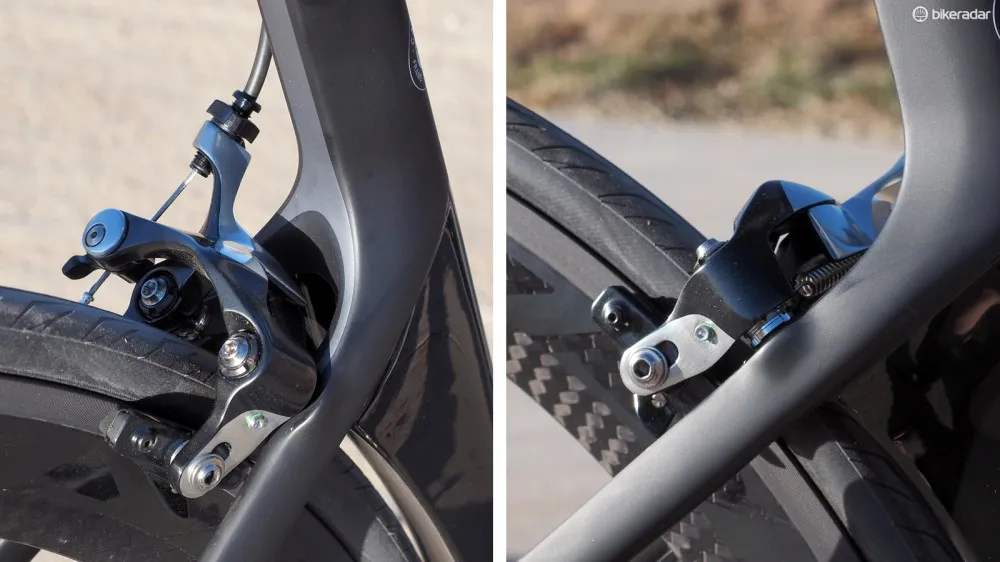
The direct-mount brakes are fantastic, offering up superb power, excellent control, and rich lever feel
Canyon may as well have included earplugs, though, as heavy braking also produces a piercing shriek – and we don't just mean irritatingly loud but a screaming, high-pitched wail that could probably shatter surrounding windows. The Exalith 2 textured sidewalls on the Mavic wheels do noticeably improve braking power over an untreated rim – especially in the wet – but they never fully quieted down even after months of descending fast and twisty Colorado mountains.
Although admirably quick in calm winds, the Cosmic Carbone's antiquated aero profile – it was introduced back in 2008 – is also easily blown around in crosswinds, plus the tire bed is inordinately narrow. Whereas more modern rims now come with nearly 20mm of width between the bead hooks (thus yielding better ride quality, handing, and aerodynamic performance), the Cosmic Carbone carries on with just 13mm. Unless Mavic has a dramatic redesign coming for 2016, we'd much rather see something more progressive like a HED Jet.
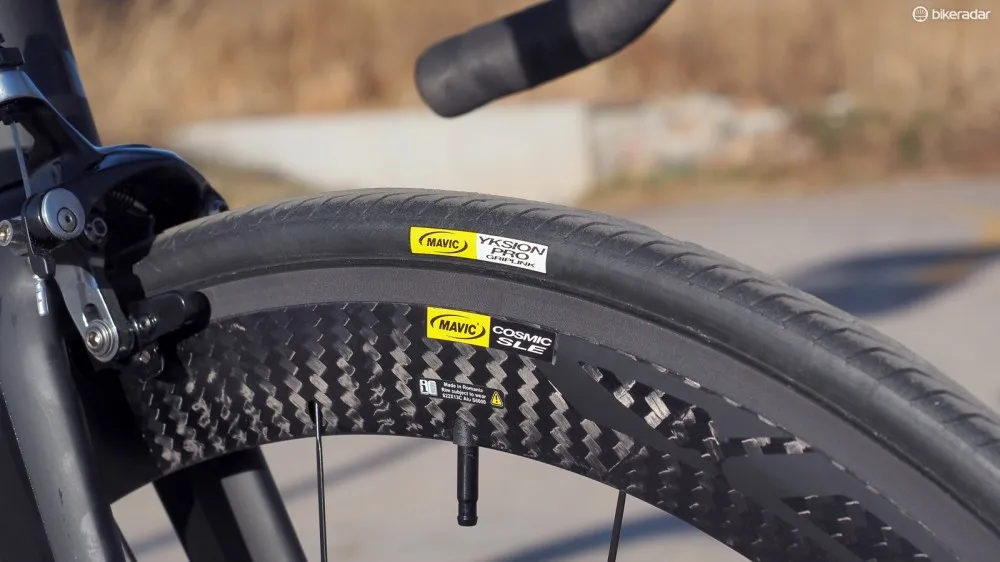
Sorry, Mavic, but this rim shape is long, long overdue for a replacement
Aero-focused handlebars are rarely comfortable to grip up top but the Canyon Aerocockpit shape actually feels pretty good in your hands with nicely rounded edges and an overall size that you can wrap your fingers around. Moreover, the relatively deep drop, long reach, and traditional bend are well suited for a long-and-low riding position.
Sprinters will find the Aerocockpit to be fantastically stout, too, with nary a hint of flex from the one-piece carbon fiber construction. We would like to see the bars wrapped further toward the stem, though. The unwrapped tops may look speedy and all, but when combined with the Aerocockpit's rigid construction, they're not a good place to spend a lot of time. Compatible computer mounts are also very limited; UK-based outfit RaceWare Direct offers a few options for Garmin heads and GoPro cameras.
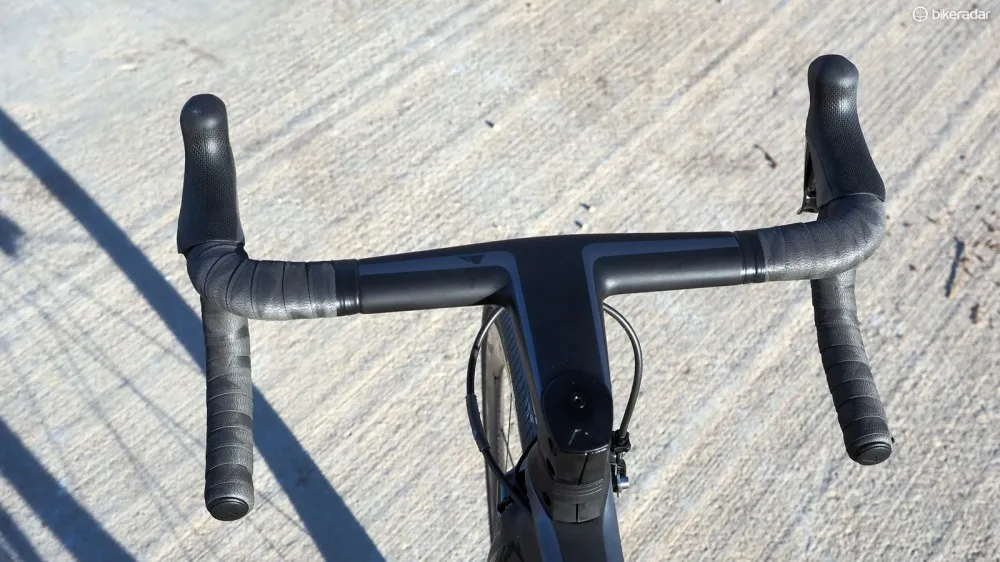
The Canyon Aerocockpit looks striking, it's ultra-rigid, and actually not too bad to hold on to, either
The bottom line: buy one (but maybe swap out the wheels)
You'll have to forgive us if it sounds like we're overly gushing over the Aeroad CF SLX but it's truthfully just that good (which makes it all the more disappointing that Canyon still doesn't sell bikes in the US). It's fast, light, comfortable, well equipped, and even remarkably good value all things considered. Nor should it be forgotten that the whole package looks absolutely fantastic, too.
Unfortunately, the only thing keeping the Aeroad from a perfect score is the wheelset. Swap the stock Mavics out for something more befitting the rest of the bike and you'll have a truly stellar machine.
For more information, visit www.canyon.com.
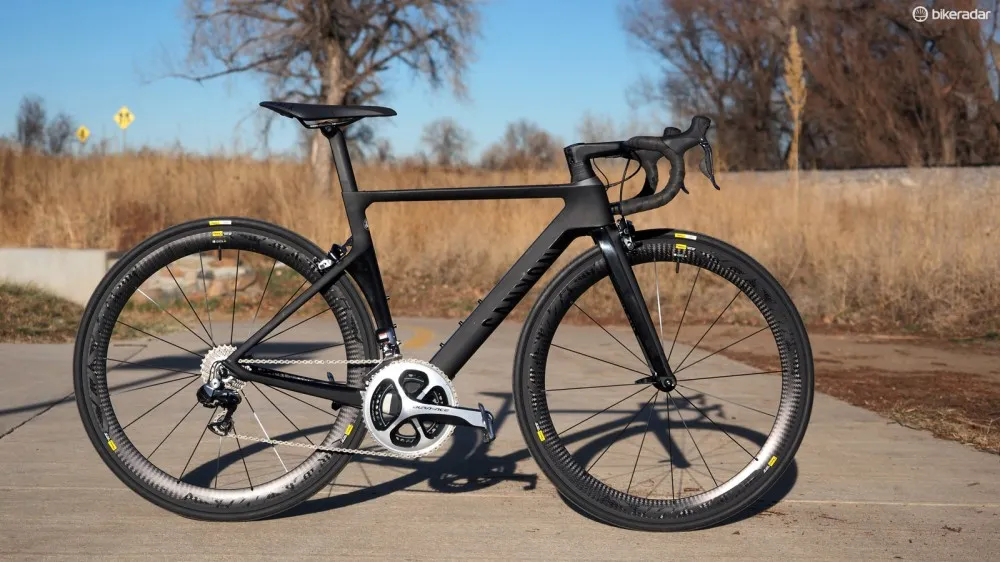
Complete bike specifications
- Frame: Canyon Aeroad CF SLX
- Fork: Canyon Aeroblade SLX
- Headset: Acros custom 1 1/4in integrated for Canyon
- Stem and handlebar: Canyon H11 Aerocockpit CF
- Front brake: Shimano Dura-Ace direct-mount with Mavic Exalith-specific pads
- Rear brake: Shimano Dura-Ace direct-mount with Mavic Exalith-specific pads
- Brake levers: Shimano Dura-Ace Di2 Dual Control ST-9070
- Front derailleur: Shimano Dura-Ace Di2 FD-9070
- Rear derailleur: Shimano Dura-Ace Di2 RD-9070
- Shift levers: Shimano Dura-Ace Di2 Dual Control ST-9070
- Cassette: Shimano Dura-Ace CS-9000, 11-28T
- Chain: Shimano Dura-Ace CN-9000
- Crankset: Shimano Dura-Ace FC-9000, 52/36T
- Bottom bracket: Shimano press-fit
- Pedals: n/a
- Wheelset: Mavic Cosmic Carbone SLE
- Front tire: Mavic Yksion Pro GripLink, 700x23c
- Rear tire: Mavic Yksion Pro PowerLink, 700x23c
- Saddle: Fizik Arione Mg
- Bar tape: Canyon Ergospeed Gel
- Seatpost: Canyon S27 Aero VCLS CF
